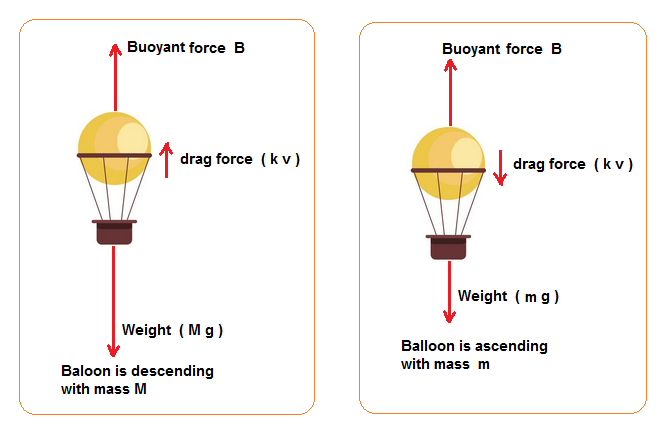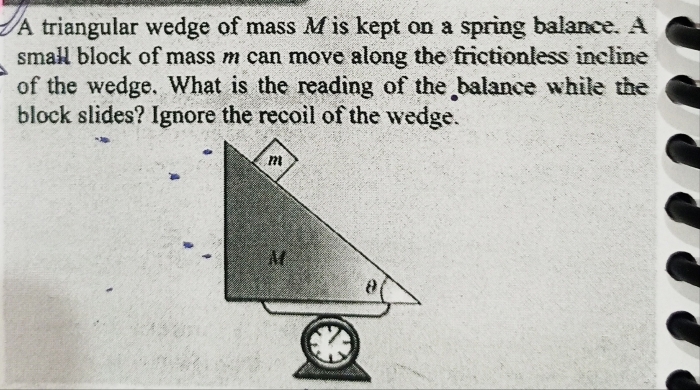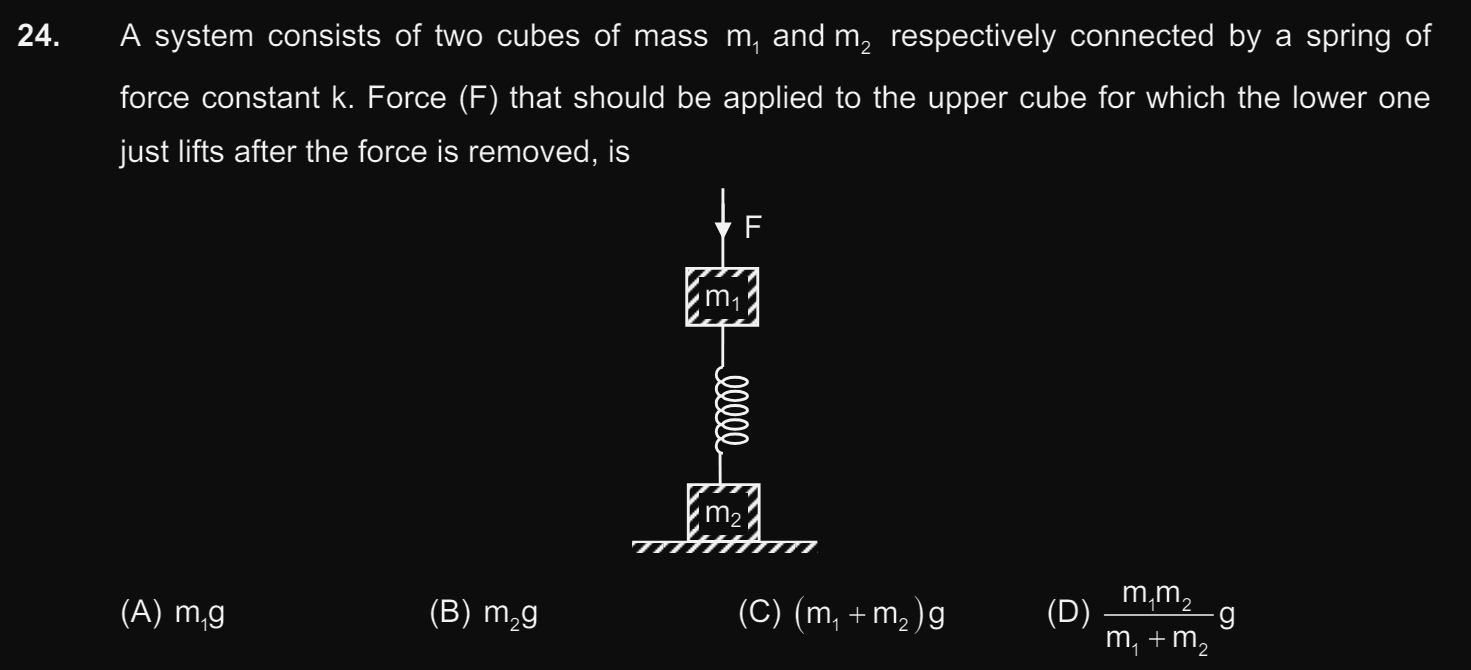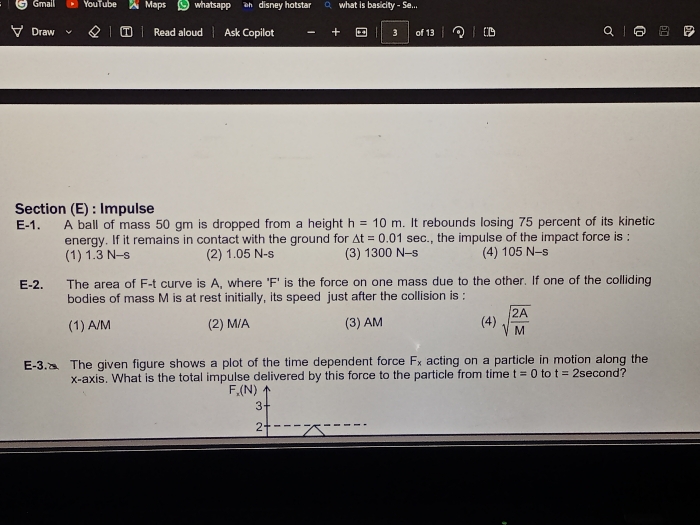JEE Class main Answered
the force of buoyancy exerted by the atmosphere on a balloon is B in upward direction and remains constant . the force of air resistance on the balloon acts opposite tom the direction of velocity and is proportional to it .The balloon carries a mass M and is found to fall down near the earths surface with a constant velocity v . How much mass should be removed from the balloon so that it may rise with a constant velocity v ?
Asked by geethamehs08 | 19 Oct, 2022, 18:28: PM

When the balloon is descending with constant speed v , net force acting on balloon is zero
by Newton's second law of motion .
Net Force :- B + ( k v ) - ( M g ) = 0 ..........................(1)
where B is buoyant force , ( kv) is drag force that is directly proportional to velocity v ,
M is initial quantity of mass carried by the balloon and g is acceleration due to gravity
When the balloon is ascending with constant speed v , net force acting on balloon is zero by
Newton's second law of motion .
Net Force :- B - ( k v ) - ( m g ) = 0 .........................(2)
where m is the new quantity of mass carried by the balloon and g is acceleration due to gravity.
( drag force 'kv' is opposite to the direction of motion )
By subtracting eqn.(2) from eqn.(1) , we get
2 ( k v ) = ( M - m ) g
(M - m ) = [ 2 (k v ) ] / g
Hence , amount of mass to be removed to make the balloon ascending is (M - m ) = [ 2 (k v ) ] / g
Answered by Thiyagarajan K | 20 Oct, 2022, 16:42: PM
JEE main - Physics
Asked by sumalathamadarapu9 | 23 Oct, 2024, 22:06: PM
JEE main - Physics
Asked by vradhysyam | 26 Aug, 2024, 17:17: PM
JEE main - Physics
Asked by shubh28shah | 28 Jul, 2024, 15:54: PM
JEE main - Physics
Asked by amritsheet | 30 May, 2024, 20:28: PM
JEE main - Physics
Asked by yash4518chavan | 25 May, 2024, 17:58: PM
JEE main - Physics
Asked by anupriya23102006 | 09 May, 2024, 16:09: PM
JEE main - Physics
Asked by ashwinskrishna2006 | 07 May, 2024, 17:33: PM
JEE main - Physics
Asked by saisrikar.nulakala | 16 Jan, 2024, 17:46: PM
JEE main - Physics
Asked by ch.saimanojyadav98663 | 17 Dec, 2023, 10:35: AM



